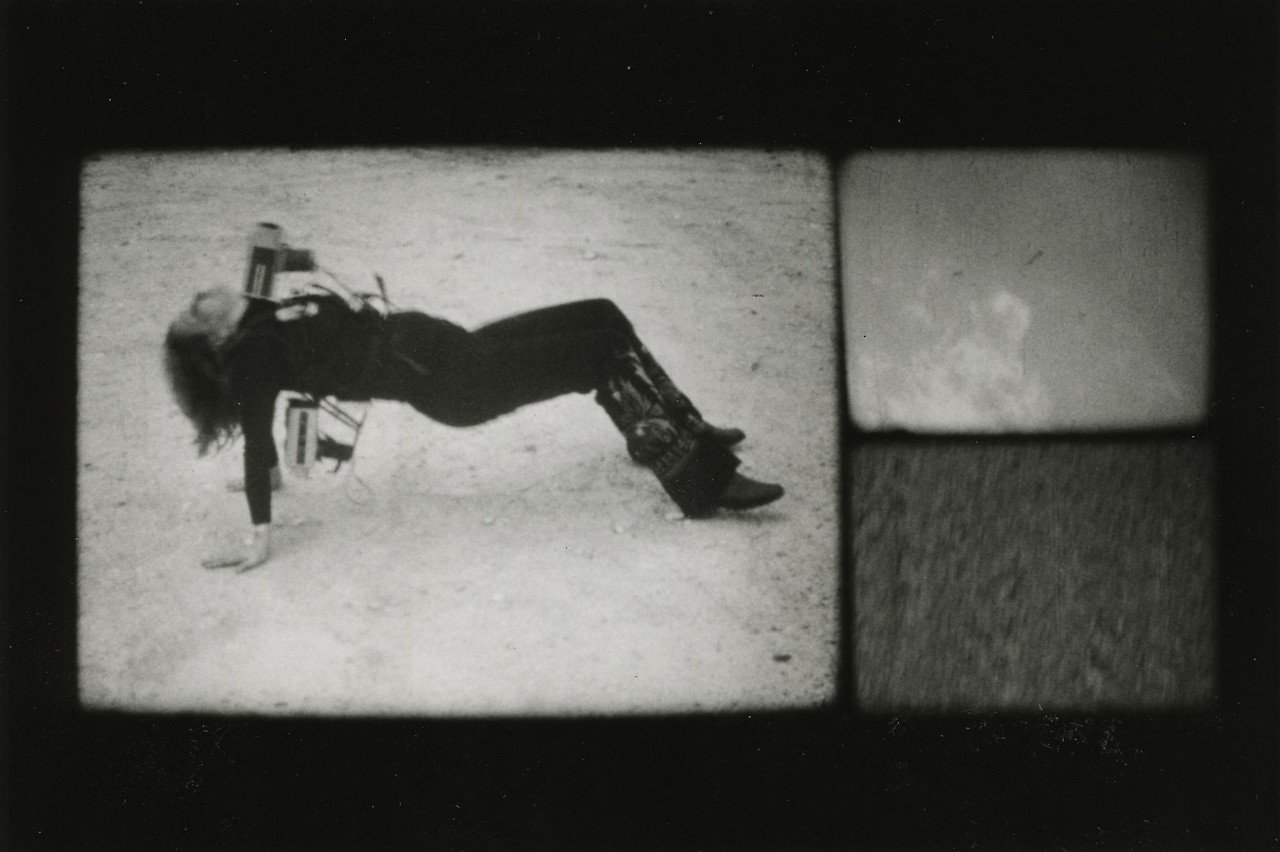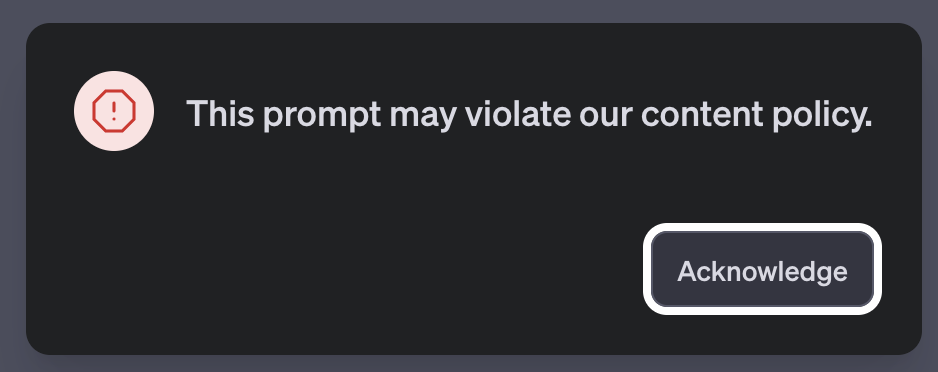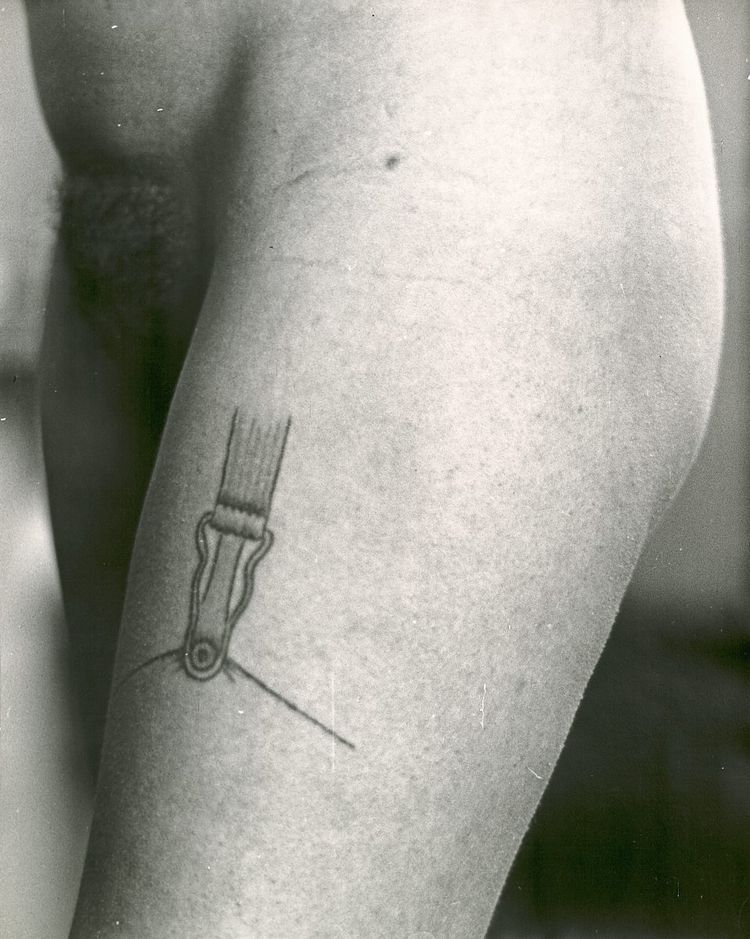Codes for (Un)Forming
Coding.Care

The camera my body, my body the camera. My body the screen, the screen my body. It’s only my body when it’s violated, when I don’t have enough space or when I’m taking too much. Otherwise just: The body, body, tired, vessel, hungry, aching, thing. A tool to notice only when it’s broken.
Becoming-concrete. Becoming-curb. Becoming-scaffold. VALIE, you made your body something between still life and parkour, your Body Configurations risk and contort the femme already at risk already contorted.
Feel like VALIE tromping through fields, unwieldy cameras strapped front and back tipping side to side and crawling through the air to make strange pictures in stereo vision. An animal with wild eyes. This was 1973 and now we all have that front-back camera you made your whole body into, we have the miniature version of that body in our pockets, close to our bodies. Of that work, you said:
“between these pictures is the body that is invisible, cutting the room.” (“Werkdetail | VALIE EXPORT” n.d.)
Reader, imagine the room you’re in without your body, just the cut it makes. Imagine a hollow in the negative of you.
Don’t you know it’s all about platforms now?
Form requires a platform, a substrate, a surface upon which to form, a meshwork, a matrix, a scaffold, a uterus: To shape it. Inform it. Feed it.
These platforms are designed to disappear. Concrete, curb, scaffold.
MOBILE FIRST!
The bleakness of platforms is dreamlike. The platform is a container and, as soon as I am inside, my body (of language) contained. The train platform is moving as I depart. I must ignore the landscape it forms around me. I wake up with its weapons in my hands. [Thinking again of Maya Deren with the knife.]
To survive we cobble together platforms into a collaborative monster: I’ll meet you on zoom and slack and google docs; have them all open at once on this apple screen, this 7-inch mobile, on this hololens where I’ll look right through you. These gestures are patented, in this invasive dream where I am at work still, even in sleep. In another tab I am reading an article about the osage orange hedges that fenced in America, their brambles impenetrable. Settlers carved up the land and enclosed it (“The Surprising Ancient History of the Hedge Apple” 2021).
Usually I dream about work or about being chased, never flying. Very rarely I will dream in succinct but complete phrases. No scenes, just words. Once I dreamt just two sentences:
“I dreamt I was mapping points of non-correspondence.”
“I dreamt I became and no one believed me.”
Except I dreamt the second sentence differently, and I was too afraid to speak it:
“I dreamt I came out and no one believed me.”
All parts of this break my heart — the dreamt version, the re-written version, the hiding and having to unhide, [even the non-correspondence and the map I imagine of it, vast as a territory].

A prompt is a kind of platform, a place off which to jump, from which to start. Like a diving platform, a prompt sets you up for something[: a fall]. Some prompts are setups. Some prompts are built to go nowhere, even if they could go anywhere. Some prompts are thwarted.
A prompt is both a blinking cursor awaiting my input, as well as the phrase I input to elicit a response from a chatbot:
“I want a dyke for president.”
VALIE, I want a dyke for president. I want a chatbot that can imagine a dyke for president and can tell me about a dyke president without it ‘violating its content policy.’ I want even a chatbot that, when prompted ‘I want a dyke for president,’ can tell me about the very real artwork by Zoe Leonard called “I want a dyke for president,” based on the dyke poet Eileen Myles’ very real 1992 campaign for president. Is it so hard to imagine such things when they do in fact exist? When they are on the cusp of existing? Even these very real things get harder to imagine when ignored by automated systems. The chatbot’s platform freezes. The screen locks and it shames me. In order to continue, I must acknowledge, submit, admit that my request ‘may violate our content policy.’ I don’t want to violate anything; I just want to see a body I recognize in a system made for dreaming. I want it to be the one acknowledging for a change. Acknowledge me in ways that don’t hurt me. No, I never expected a response, but it has erased my query entirely. The event of my desire is removed. Did it fall into the same void where all censored content goes, where an underpaid underage non-employee in a country the west refuses to acknowledge will see my dyke president request along with countless grotesque descriptions? I want a chatbot built for a world that can render a dyke president, or a poem about a dyke president — just like Zoe Leonard did and Eileen Myles did:
“someone who has made mistakes and learned from them.”
Instead I get a chatbot feeding me milquetoast lines about the importance of diversity while offering me none.
“Always a boss and never a worker, always a liar, always a thief and never caught. (Leonard 1992)
VALIE, that machine is the broken one, yet I am the one made to feel broken. Our dyke president brakes the machine; you break the machine; we are the broken machines Sarah Sharma means when she says:
“Feminists are rendered an always already obsolete technology that isn’t working properly. Feminists are the faulty aberration in a long line of otherwise efficient technologies […]. A feminism of the Broken Machine focuses on and uses the logic of the machines to highlight current power dynamics that are otherwise hard to pinpoint. The Broken Machine uncovers and incites new power moves.” (Sharma 2020)
I remember the din of your twenty-four sewing machines in a mirrored room: puncturing, puncturing, puncturing, puncturing. Beautiful, ordered chaos. It just continued on and manufactured nothing.
Once I saw a slo-mo clip of a sewing machine working its needle into fabric ever so smoothly — its sound cachunking deep, the needle dropping through, the mechanism beneath rotating over its counterweight, the needle rising, the sound cachunking again — and it was the most erotic fuck I have ever seen not censored by an algorithm. I watched it over, over, over. Cachunking.
Slowed down the machine becomes uncanny and sensual; sped up and multiplied it becomes industrial, militaristic, cinematic. Both are charged with the heat of something other than themselves, some energy which they always contained. Generations of secrets in sewing rooms knew this; broken needles and wayward stitches knew it all along.
VALIE, I want a machine (un)learning that isn’t trained to forget, but one that maps our points of non-correspondence, un-limiting the ways we might relate to one another. A machine that doesn’t boundary a category but blooms a latent spectrum in too many dimensions to classify.
VALIE, pin your garter tattoo to my leg and call it praxis.
This is a one-star review of the femme. And a five-star review at the same time.
If Duchamp and his pals get their ‘bachelor machine’, a black box for narcissistic, autoerotic, perpetual motion (Rodenbeck 2014), then I want broken machines. VALIE, I want your tits in a box, your Tap and Touch Cinema, your own kind of ‘cut piece’. You invert the darkness of peepshows and porn theaters, asking: What are you willing to do to a stranger in public, now that you have a platform?
A broken thing can be just a crack, a glitch, a “‘minute change in voltage […] Glitches - a spaceman’s word for irritating disturbances.’” Such small fractures can become “an outright refusal, a ‘nope’ in its own right” (Russell 2020). Legacy Russell finds the opening in the break, the launchpoint and the promise in the always-broken platform:
“Glitch manifests with such variance, generating ruptures between the recognized and recognizable, and amplifying within such ruptures, extending them to become fantastic landscapes of possibility” (Russell 2020)
VALIE, with your wild rebel hair and motorcycle murder-chic, it’s the cutaway crotch of your pants that extends this fantastic landscape. This is not a cheesy metaphor for vulvas. It’s the literal rupture of the glitch, saying “Fuck you, just try to describe me while keeping to your content policy.”
They made this your most famous image, and still they tore it from the walls of the city.
It doesn’t matter if you’re a dyke or not. If you’re running for president, they’ll call you one.
Remember, the femme platforms are the things we are designed to disappear as. A surface upon which someone else may form. Body invisible, cutting the room.
But in the din of the room, in the cut, you bloom a bruise.
